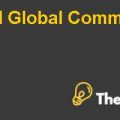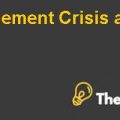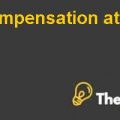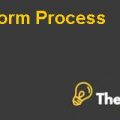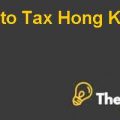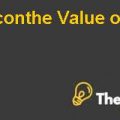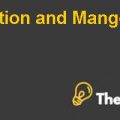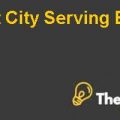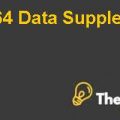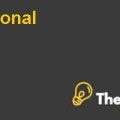
Diageo Plc
Introduction
The report presents a case about Diageo plc, world’s leading consumer product company, which intends to sell its packed food subsidiary, Pillsbury to General Mills and also considers selling 20% of its Burger King subsidiary through an initial public offering. The company’s intention behind this strategy is to raise funds from divesting the shareholding and to exclusively focus on beverage alcohol industry.
Problem Statement
Diageo plc is concerned about the potential exit strategy, which can have a significant impact on the capital structure of the company. Further, the company is considering expanding its operations in beverage alcohol industry in order to enjoy the future sustainable growth.
Case analysis
The comprehensive report has been prepared to discuss the capital structure of the company and its effects on the operations of the company. The report also contains an evaluation of the risk and recommendations for further improvements. The major areas discussed include the following:
- Capital structure policies of Diageo and comparison with its best competitors
- Sale of Pillsbury and Burger King
- Factors involved in simulation model and further adjustments in the model
Capital structure policies of Diageo and comparison with its best competitors
Prior to the merger of Guinness and Grand Metropolitan, both the companies were using reasonably little debt to finance their strategies which helped them to maintain high credit rating and consequently, they had a rating of AA and A respectively. After the merger, the Diageo plc succeeded to manage the capital structure of the company and reported a credit rating of A+. Further, Diageo wanted to continue the same strategy in future by maintaining the interest coverage ratio between 5 to 8 times and EBITDA as a percentage of total debts by 30% to 35%
In order to facilitate better comparison, the group’s results have been compared with individual segment and later on with an average of the segment’s results.
Our analysis in Appendices 1 shows that the interest coverage of Diageo plc represents 5 times whereas the average of alcohol, beer, packed food and restaurant indicates 8.05, 10, 7.88 and 7.9 times respectively and the average of different segments represent interest coverage of 8.46 times. The interest coverage of the company is substantially lower than the industry’s average, which may raise difficulty for the company in arranging further funds.
The EBITDA/ Total Debts of Diageo plc represents 34% where as the average of alcohol, beer, packed food and restaurant indicates 38%, 86%, 55% and 54% respectively and the average of different segments represents 58%. Although, the company has managed to maintain the EBITDA/Total Debts by 34% but fails to meet the industry’s average of 58%, so the potential debt holders may resist investing in company.
Further, the book gearing of Diageo plc represents 59% whereas the average of alcohol, beer, packed food and restaurant indicates 62%, 41%, 77% and 85% respectively and the average of different segments represents 66%, the ratio is much attractive because the company succeeds to maintain low gearing as compared to the industry’s average.
Further, the market gearing of Diageo plc represents 25% whereas the average of alcohol, beer, packed food and restaurant indicates 28%, 17%, 19% and 21% respectively and the average of different segments represents 21%, the market gearing is slightly lower than the alcohol industry but higher than the rest of the segments.
The company wants to continue with the beverage alcohol segment, so it is more beneficial to compare it with the major rivals of the company in alcohol industry i.e.: Allied Domecq. The Diageo plc has interest coverage of 5 times whereas the interest coverage of Allied Domecq is slightly higher and represents 5.7 times but on the other hand Diageo plc has managed to maintain the book gearing and market gearing of the company, which represents 59% and 25% respectively, this figure is slightly greater than Allied Domecq’s book gearing and market gearing of 88% and 29% respectively. Further, the credit rating of Diageo plc represents A+ whereas the credit rating of Allied represents A-. However, the results of the analysis show that the Diageo plc is capable of acquiring more finance as compared to its direct competitor of alcohol segment............................
This is just a sample partial case solution. Please place the order on the website to order your own originally done case solution.
The main British multinational is to reassess their policy instruments, and restructure its business. Models treasury team compromise between the benefits and costs of debt financing, using the Monte Carlo method to estimate savings from tax shields and expected financial distress costs under several sets of policy tools. Treasurer of the group (CFO) must decide whether and how the simulation results to be included in the recommendation to the board of directors and, more generally, that the recommendation is to use the policy of the company. "Hide
by George Chacko, Peter Tufano, Joshua Musher Source: HBS Premier Case Collection 16 pages. Publication Date: January 29, 2001. Prod. # 201 033-PDF-ENG

